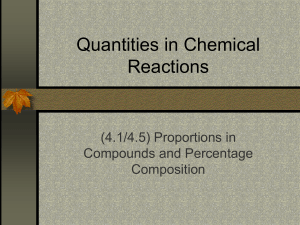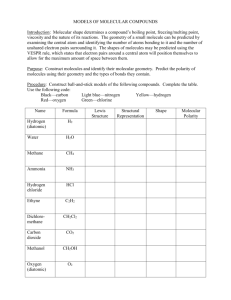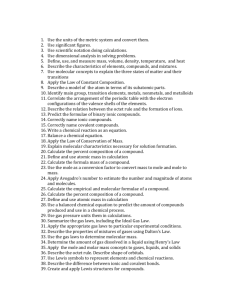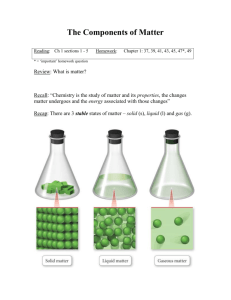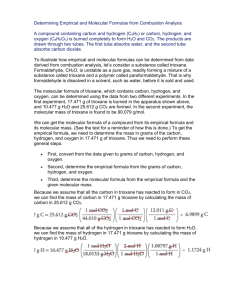12 - Covalent Bonding - Chemistry
advertisement
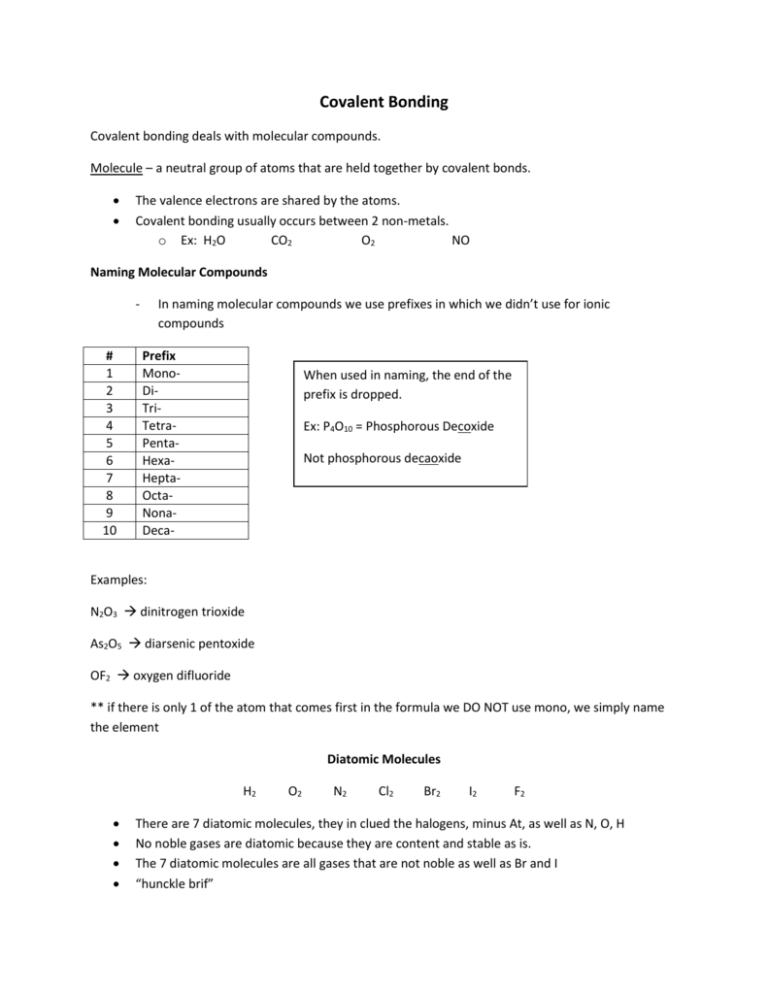
Covalent Bonding Covalent bonding deals with molecular compounds. Molecule – a neutral group of atoms that are held together by covalent bonds. The valence electrons are shared by the atoms. Covalent bonding usually occurs between 2 non-metals. o Ex: H2O CO2 O2 NO Naming Molecular Compounds - # 1 2 3 4 5 6 7 8 9 10 In naming molecular compounds we use prefixes in which we didn’t use for ionic compounds Prefix MonoDiTriTetraPentaHexaHeptaOctaNonaDeca- When used in naming, the end of the prefix is dropped. Ex: P4O10 = Phosphorous Decoxide Not phosphorous decaoxide Examples: N2O3 dinitrogen trioxide As2O5 diarsenic pentoxide OF2 oxygen difluoride ** if there is only 1 of the atom that comes first in the formula we DO NOT use mono, we simply name the element Diatomic Molecules H2 O2 N2 Cl2 Br2 I2 F2 There are 7 diatomic molecules, they in clued the halogens, minus At, as well as N, O, H No noble gases are diatomic because they are content and stable as is. The 7 diatomic molecules are all gases that are not noble as well as Br and I “hunckle brif” Empirical Formula - - A formula that represents the lowest integral ratio of atoms of the elements in a compound o C2H4 o C3H6 o C4H8 Each of these have the same empirical formula: CH2 Think of empirical formula as the lowest common denominator of the chemical formula o Ex: C2H6O2 CH3O o NaC4H6O2 NaC4H6O2 this formula is already in its lowest form. Naming Acids Anion --ide --ite --ate Acid name Hydro—ic --ous --ic Example HCl = hydrochloric acid HNO2 = nitrous acid HNO3 = nitric acid ***for –ite think tonsalitous…. Tonsal “ite” “ous” *** for –ate think I “ate” something “ic”ky Only binary acids use “hydro” o Binary = 2 components Calculating Molar Mass (molecular weight, molecular mass, mass of compound) To calculate the molar mass of a compound, we must first find the mass of each element involved in the formula o Ex: H2O H = 1.00 O = 16.00 Then we must account for how many of each element we have. o 2 H (1.00) x 2 = 2.00 o 1 O (16.00) x 1 = 16.00 Then we add up the totals to get the Molecular Mass of the compound. o 2.00 + 16.00 = 18.00 H2O (water) has a molecular mass of 18.00 Law of Conservation of Mass – in ordinary chemical reactions, matter can be changed in many ways, but it can NOT be created or destroyed. Law of Definite Proportions – specific substances always contain elements in the same ratio by mass. o there are very definite proportions of each element in a particular compound Law of Multiple Proportions – the ratio of masses of one element that combine with a constant mass of another element can be exposed in ratios of small whole numbers o Ex: CO vs CO2 same elements but different proportions o H2O vs H2O2 the ratio of O to H is half in H2O of what it is in H2O2 Example: In compounds of elements A and B, the ratio of masses of A & B are small whole numbers. Water 16g oxygen H2O 2g hydrogen Hydrogen peroxide H2O2 32g oxygen 2g hydrogen 8g oxygen 1g hydrogen 16g oxygen 1g hydrogen **Hydrogen peroxide MUST contain twice as much oxygen as water.
